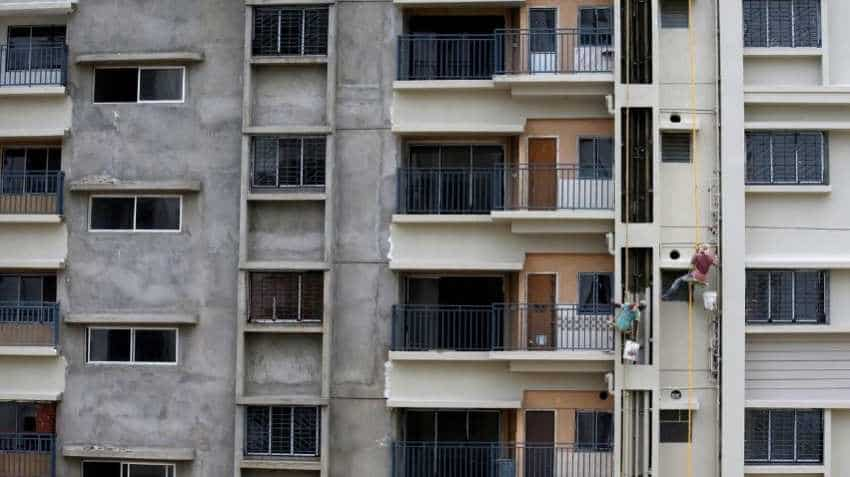Affordable housing: Why flat sizes are shrinking? Here are the reasons
The liquidity crisis, changing buyer preferences, and growing concerns about affordability have made real estate developers to rethink the conventional wisdom of "bigger is better", and to significantly moderate unit sizes across the seven major cities.

The liquidity crisis, changing buyer preferences, and growing concerns about affordability have made real estate developers to rethink the conventional wisdom of "bigger is better", and to significantly moderate unit sizes across the seven major cities. Data released by ANAROCK Property Consultants indicates that average apartment sizes in the top seven cities have shrunk by 27 percent over the last five years – from 1,400 sq. ft in 2014 to nearly 1,020 sq. ft in 2019. However, the national capital region (NCR), one of the worst-hit residential markets in recent years, has seen least decline of merely 6 percent during this period. The current average size of apartments in NCR is nearly 1,390 sq. ft, which is bigger than average flat sizes in Bengaluru, where the average size is 1,300 sq ft in 2019.
Anuj Puri, Chairman, ANAROCK Property Consultants, said Mumbai Metropolitan Region (MMR) already has the smallest average apartment size among all top cities, and also recorded the highest drop of 45 percent from 960 sq. ft in 2014 to 530 sq. ft in 2019. Pune followed with a 38 percent reduction in sizes during this period, with the average apartment size currently at 600 sq. ft. Average sizes in both MMR and Pune are calculated on the carpet area while for the remaining cities it is based on the built-up area.
Watch Zee Business TV LIVE here:
"The main southern cities of Chennai, Bangalore and Hyderabad have seen size reduction of 8 percent, 9 percent and 12 percent, respectively, over the last five years. What also makes these cities unique is that the prevailing average sizes of apartments are among the highest," said Puri.
The current average size of properties in Hyderabad (at 1,570 sq. ft) is the maximum among the top 7 cities. Similarly, the average size of properties in Bengaluru is comparatively bigger (about 1,300 sq. ft), while in Chennai it is about 1,190 sq. ft. Meanwhile, Kolkata saw sizes reduce by 9% over the last five years to stand at 1,120 sq. ft. now against 1,230 sq. ft. in 2014.
Why flat sizes are shrinking?
Huge demand for affordable homes in metros, government’s credit subsidy benefits for affordable housing, which requires a home to be priced less than Rs 45 lakhs and not exceed 60 sq. mt carpet area or about 850 sq. ft built-up area (including overall loading). Small-size affordable segment helps buyers avail of the subsidies. Moreover, buying an affordable home also comes with GST benefits. The GST for affordable housing is 1 percent as against 5 percent for mid-segment homes.
11:00 AM IST






 Union Budget 2020 INDIA BLUEPRINT: Zee Business Managing Editor Anil Singhvi outlines what common man, others want
Union Budget 2020 INDIA BLUEPRINT: Zee Business Managing Editor Anil Singhvi outlines what common man, others want Budget 2020 Expectations: Home loan interest payment rebate could galvanise homebuyers; see how
Budget 2020 Expectations: Home loan interest payment rebate could galvanise homebuyers; see how Rs 250 crore to be invested for developing affordable & mid-income housing projects: Kamal Singal, MD & CEO, Arvind SmartSpaces
Rs 250 crore to be invested for developing affordable & mid-income housing projects: Kamal Singal, MD & CEO, Arvind SmartSpaces Modi Cabinet clears Rs 25,000 cr special fund for stalled housing projects, announces Nirmala Sitharaman
Modi Cabinet clears Rs 25,000 cr special fund for stalled housing projects, announces Nirmala Sitharaman Is Ghaziabad NCR's new affordable housing hotspot? Noida, Greater Noida remain favourite among mid-segment buyers
Is Ghaziabad NCR's new affordable housing hotspot? Noida, Greater Noida remain favourite among mid-segment buyers